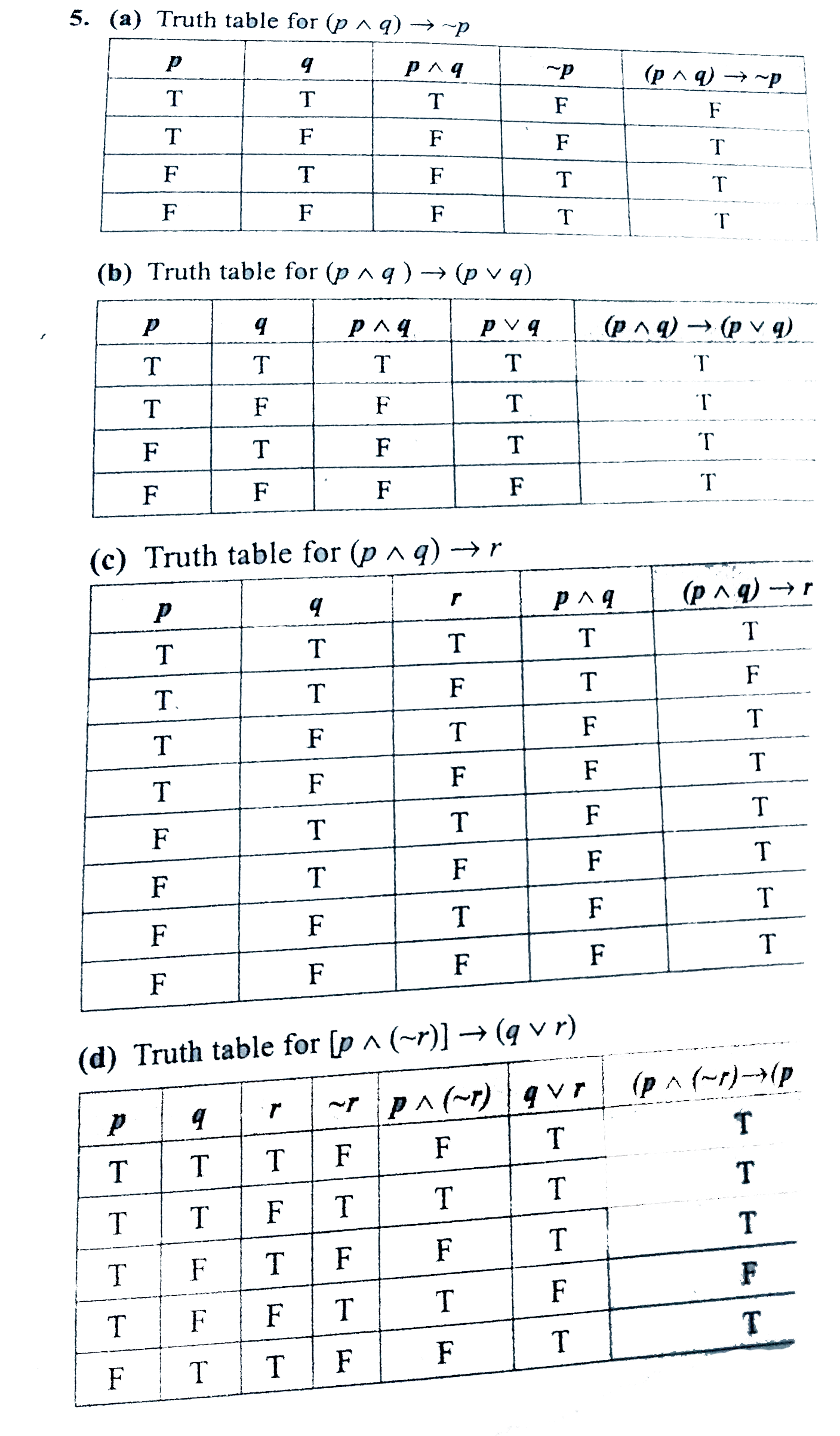Construct the truth table for the followings statements :
(a) (p∧q)→~p (b)(p∧q)→(p∨q)
(c) (p∧q)→r (d)[p∧(~r)]→(q∨r)
The correct Answer is:

Topper's Solved these Questions
- BOOK - CENGAGECHAPTER - MATHMETICAL REASONINGEXERCISE - Exercise 10.25videos
MATHMETICAL REASONING
- BOOK - CENGAGECHAPTER - MATHMETICAL REASONINGEXERCISE - Exercise (Single)38videos
MATHMETICAL REASONING
- BOOK - CENGAGECHAPTER - MATHMETICAL REASONINGEXERCISE - JEE Previous Year10videos
MATHMETICAL REASONING
- BOOK - CENGAGECHAPTER - LOGARITHM AND ITS PROPERTIESEXERCISE - JEE Previous Year5videos
LOGARITHM AND ITS PROPERTIES
- BOOK - CENGAGECHAPTER - MATRICESEXERCISE - Solved Examples And Exercises165videos
MATRICES
Similar Questions
Prepare truth tables for the following statements :
(1) (p∧q)→(~P) (2) ~(~p∧~q)∨q (3) p→[~(q∧r)]View SolutionConstrust truth tables for the following statements :
~(p∧~q) (ii)~[(~p)∨(~q)] (iii)(p∧q)∧(~p)View SolutionWrite down the truth tables for the following statements :
(p∧q)⇒~p (ii)(p∧q)⇒(p∨q)View SolutionWrite down the truth table for the compound statements :
(~p∨q)∧(~p∧~q)View SolutionConstruct the switching circuit for the following statement :
[p∨(~p∧q)]∨[(~q∧r)∨~p].View SolutionFind the truth values of the following compound statements :
(i) P∧(q∧r) (ii)(p∨q)∨r
(iii) p∧(q∨r) (iv)(p∧q)∨rView SolutionConstruct the truth table for the statement p→[q→(p∧q)]p→[q→(p∧q)]. Interpret the result.
View SolutionConstruct the switching circuit for each of the following statements :
(1) (p∧q)∨(~p)∨(p∧~q)
(2) (p∧q∧r)∨[~p∨(∧~r)]
(3) [p∨(~p∧q)]∨[(~q∧r)∨~p]View SolutionUsing the truth table, prove the following logical equivalence :
p⇔q≡(p∧q)∨(~p∧~q).View SolutionUsing truth tables, prove the following equivalences :
(1) ~p∨q≡~(p∧q)→[~p∨(~p∨q)]
(2) p⇔q≡(p∧q)∨(~p∧~q)
(3) (p∧q)→r≡p→(q→r)View Solution

